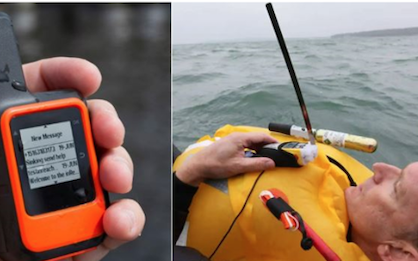The National Transportation Safety Board issued a safety alert urging vessel owners and operators to provide each crewmember with a personal locator device. These devices improve a mariner’s chance of rescue during an emergency.
During an emergency at sea, a mariner’s chance of survival decreases if search and rescue cannot quickly and accurately identify their location. Personal locator devices, such as personal locator beacons (PLB) or satellite emergency notification devices (SEND), can accurately pinpoint a person’s location. NTSB investigations found that currently available personal locator beacons provide a location accuracy of about 300 feet and a nearly instant search and rescue notification when activated.
Vessel owners and operators should consider the following when selecting and implementing crew use of personal locator devices:
• Determine the best type of personal locator device for your crew. Some devices transmit via satellite, while others transmit on terrestrial frequencies. Not all devices notify the Coast Guard directly.
• Provide each crewmember a personal locator device and ensure they carry it. Devices can be worn in a zipped clothing pocket or a bag attached to a belt or attached to personal flotation devices.
• Register each crewmember’s personal locator device with the appropriate organization. Personal locator beacons must be registered through the National Oceanic and Atmospheric Administration (NOAA), while SENDs and other similar devices should be registered through the manufacturer or operating company.
The safety alert notes six casualties NTSB has investigated where personal locator devices could have assisted or did assist rescuers in locating survivors, including the rescue of all aboard the fishing vessel Ambition after a crewmember’s use of a SEND prompted an immediate response when the vessel began to flood in the Bering Sea in 2016.





